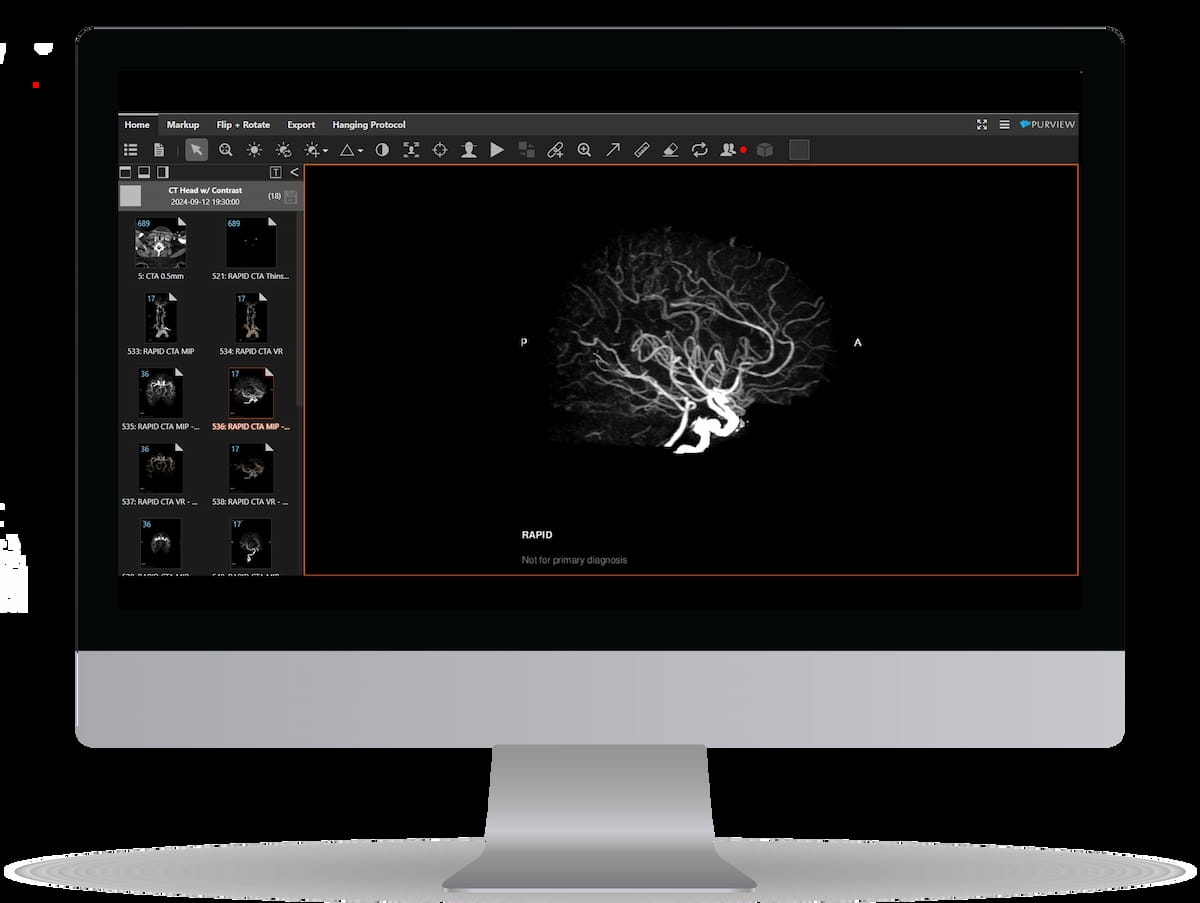While manual reconstruction of computed tomography angiography (CTA) images may take hours to complete, the Food and Drug Administration (FDA) has granted 510(k) clearance to Lumina 3D™, an artificial intelligence (AI) software that offers three-dimensional (3D) reconstructions of the head and neck within minutes.
Exclusively deployed on RapidAI’s Rapid Edge Cloud platform, Lumina 3D allows neuroradiologists to see enhanced visualization of a patient’s aortic arch, carotid artery tortuosity and neurovasculature on mobile devices, according to RapidAI.
The company emphasized that the enhanced imaging capabilities with Lumina 3D reduce procedure times through enhanced accuracy with pre-op planning and catheter selection.
“With a 98% DICE score and results available in minutes, Lumina 3D's level of automation, speed, and accuracy is unprecedented. We are entering an era of precise procedural planning where initial device selection is optimized for individual patient anatomy. … This is a technology that delivers not just better imaging, but potentially better outcomes,” said Daniel Gibson, M.D., a neuro-interventional radiologist affiliated with Goodman Campbell Brain and Spine in Carmel, Ind.
